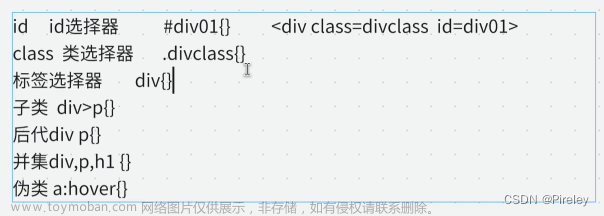一.前端--左侧导航栏,右侧内容
理想如下:

1.左右侧的框架搭建
以学生登录系统为例,下方代码能够搭建基本的左侧导航栏,右侧内容的框架
- 导航栏中每一行用超链接表示,a 指向对应的controller层方法,target="iframe_a"指向右侧内容,最终实现在iframe_a容器中显示conroller层调用的方法显示的界面
<%@ page contentType="text/html;charset=UTF-8" %>
<html lang="en">
<head>
<meta charset="UTF-8">
<meta http-equiv="X-UA-Compatible" >
<title>首页</title>
<meta name="viewport" content="width=device-width, initial-scale=1.0">
<link rel="stylesheet" href="https://cdn.staticfile.org/twitter-bootstrap/3.3.7/css/bootstrap.min.css">
<script src="https://cdn.staticfile.org/jquery/2.1.1/jquery.min.js"></script>
<script src="https://cdn.staticfile.org/twitter-bootstrap/3.3.7/js/bootstrap.min.js"></script>
<%Boolean result2 = (Boolean) session.getAttribute("result_login");
if(result2){ %>
<script type="text/javascript">
$(function(){alert("登陆成功!");});
</script>
<%
session.setAttribute("result_login",null);}
%>
<style>
.father_box {
margin-top: 50px;
position: relative;
width: 100%;
height: 800px;
}
.content_one {
overflow: hidden;
padding-top: 3px;
width: 18%;
height: 800px;
background-color: orange;
}
.content_two {
position: relative;
left: 18%;
right: 12%;
top: -800px;
width: 82%;
height: 750px;
}
.nav-stacked {
width:96%;
margin: 0 auto;
text-align:center;
}
</style>
</head>
<body>
<%--通过学生登录时的判断获取该学生的信息--%>
<%Students students = (Students) session.getAttribute("student_curr");%>
<nav class="navbar navbar-default navbar-fixed-top">
<div class="badge-primary">TYUT公寓管理系统--你好,<%=students.getsName()%>同学,欢迎登陆!
<ul class="nav navbar-nav">
<!-- Dropdown -->
<li class="dropdown">
<a href="#" class="dropdown-toggle" data-toggle="dropdown" >
个人中心
<b class="caret"></b>
</a>
<ul class="dropdown-menu">
<li><a href="#" >个人信息</a></li>
<li><a href="#">退出</a></li>
</ul>
</li>
</ul></div>
</nav>
<div class="father_box">
<div class="content_one">
<ul class="nav nav-pills nav-stacked" >
<!--style="width:96%;margin: 0 auto; text-align:center" 行内优先级高可改变导航的宽高用%可以是页面更协调-->
<li class="dropdown">
<a href="#" class="dropdown-toggle" data-toggle="dropdown" role="button" aria-haspopup="true" aria-expanded="false">报修 <span class="caret"></span></a>
<ul class="dropdown-menu ">
<li><a href="${pageContext.request.contextPath}/Msg/PageFindMsg" target="iframe_a">报修记录</a></li>
<li><a href="${pageContext.request.contextPath}/Msg/toInsertMsg?sId=<%=students.getsId()%>" target="iframe_a">申请报修</a></li>
</ul>
</li>
</ul>
</div>
<div class="content_two">
<!--右侧内容显示的盒子-->
<iframe width="100%" height="100%" name="iframe_a" frameborder="0" scrolling="no"></iframe>
</div>
</div>
</body>
</html>
如下所示,点击报修后 任意选择,在右侧跳转对应界面,以显示报修记录为例

- 分页展示的controller层方法(仅仅是个例子),主要是看return的是“showMsg.jsp”
@RequestMapping("/PageFindMsg")
public String PageFindAllMsg(@RequestParam(value = "pn",defaultValue = "1") int pn, HttpSession session){
Page result = studentMsgService.showPageMsg(pn,3,session);
System.out.println(pn);
session.setAttribute("page",result);
System.out.println(result);
return "StudentMsg/showMsg";
}2.表格的前端显示
接着看showMsg.jsp,复制粘贴就行,填上自己的内容!最后分页的部分可以在本文后半部分看;
<%@ page import="com.tyut.pojo.Page" %>
<%@ page import="com.tyut.pojo.Msg" %>
<%@ page import="java.util.List" %>
<%@ page import="com.tyut.pojo.Students" %>
<%@ page contentType="text/html;charset=UTF-8" language="java" %>
<html>
<head>
<title>保修记录</title>
<meta name="viewport" content="width=device-width, initial-scale=1.0">
<link rel="stylesheet" href="https://cdn.staticfile.org/twitter-bootstrap/3.3.7/css/bootstrap.min.css">
<script src="https://cdn.staticfile.org/jquery/2.1.1/jquery.min.js"></script>
<script src="https://cdn.staticfile.org/twitter-bootstrap/3.3.7/js/bootstrap.min.js"></script>
<%String result = (String) session.getAttribute("res_add");
if(result!=null){ %>
<script type="text/javascript">
$(function(){alert("<%=result%>");});
</script>
<%
session.setAttribute("res_add",null);}
%>
</head>
<body>
<div class="container">
<div class="row clearfix">
<div class="col-md-12 column">
<div class="page-header">
<h1>
<small>保修信息列表</small>
</h1>
</div>
</div>
</div>
<div class="row">
<div class="col-md-4 column">
<%Students students = (Students)session.getAttribute("student_curr");%>
<a class="btn btn-primary" href="${pageContext.request.contextPath}/Msg/toInsertMsg?sId=<%=students.getsId()%>">申请保修</a>
</div>
</div>
<div class="row clearfix">
<div class="col-md-12 column">
<table class="table table-hover table-striped" id="managers_table">
<thead>
<%--表头--%>
<tr>
<th>发送者Id</th>
<th>发送者姓名</th>
<th>报修内容</th>
<th>发送时间</th>
<th>状态</th>
<th>楼管备注</th>
</tr>
</thead>
<%-- 表主体--%>
<tbody>
<%Page page1 = (Page)session.getAttribute("page");%>
<%List<Msg> msgs = page1.getRows_Msg(); %>
<%if(msgs.size() == 0){%>
<tr><div class="text-center">暂无信息</div></tr>
<%}%>
<%for(Msg msg:msgs){%>
<tr>
<td><%=msg.getsId()%></td>
<td><%=msg.getsName()%></td>
<td><%=msg.getMsg()%></td>
<td><%=msg.getTime()%></td>
<% if(msg.getStatus().equals("待处理")){%>
<td><p class="text-danger"><%=msg.getStatus()%></p></td>
<%}else{%>
<td> <p class="text-success"><%=msg.getStatus()%></p></td>
<%}%>
<td><%=msg.getManagerResp()%></td>
</tr>
<%}%>
</tbody>
</table>
<div class="curPage" align="center">
当前页 <%=page1.getCur()%> 共 <%=page1.getEnd()%> 页,共 <%=page1.getTotal()%> 条数据
</div>
<a href="${pageContext.request.contextPath}/Msg/PageFindMsg?pn=<%=page1.getPageInfo_Msg().getPrePage()%>">上一页</a>
<a href="${pageContext.request.contextPath}/Msg/PageFindMsg?pn=<%=page1.getPageInfo_Msg().getNextPage()%>">下一页</a>
</div>
</div>
</div>
</div>
</body>
</html>该表格运行样式如下,是运用了bootstrap的简易样式;

3.新增、修改页面--表单的前端显示
以学生发送报修信息为例,点击“申请报修”后,实际调用/Msg/toInsertMsg对应的controller层方法,由他跳转到填写表单的页面sendMsg.jsp
@RequestMapping("/toInsertMsg")
public String toInsertMsg(int sId, HttpSession session){
return "StudentMsg/sendMsg";
}
sendMsg.jsp如下,这里关于学生的id、姓名和宿舍楼号等信息都是写死的,学生不用填
<%@ page contentType="text/html;charset=UTF-8" language="java" %>
<html>
<head>
<title>Title</title>
<meta name="viewport" content="width=device-width, initial-scale=1.0">
<link rel="stylesheet" href="https://cdn.staticfile.org/twitter-bootstrap/3.3.7/css/bootstrap.min.css">
<script src="https://cdn.staticfile.org/jquery/2.1.1/jquery.min.js"></script>
<script src="https://cdn.staticfile.org/twitter-bootstrap/3.3.7/js/bootstrap.min.js"></script>
</head>
<body>
<div id="all" class="container">
<div class="row clearfix">
<div class="col-md-12 column">
<div class="page-header">
<h1>
<small>修改职工信息</small>
</h1>
</div>
</div>
</div>
<%Students stu = (Students)session.getAttribute("student_curr");%>
<form
name="newManager" class="form-horizontal" role="form" action="${pageContext.request.contextPath}/Msg/insertMsg" method="post">
<table class="table table-hover">
<tr>
<th>发送者Id:</th>
<td>
<%=stu.getsId()%><input type="hidden" name="sId" value=<%=stu.getsId()%>>
</td>
</tr>
<tr>
<th>发送者姓名:</th>
<td><%=stu.getsName()%><input type="hidden" name="sName" value=<%=stu.getsName()%>></td>
</tr>
<tr>
<th>报修内容:</th>
<td> <div class="row">
<div class="col-md-3" size="10">
<textarea class="form-control" rows="3" name="msg"></textarea>
</div>
</div>
</td>
</tr>
<tr>
<th>联系电话:</th>
<td><input class="form-control" type="text" name="sPhone" value=<%=stu.getsPhone()%>></td>>
</tr>
<input type="hidden" value="待处理" name="status" >
<input type="hidden" value="暂无" name="managerResp" >
<input type="hidden" value=<%=stu.getsNumber()%> name="sNumber" >
</table>
<input type="submit" value="提交"/>
<input type="reset" value="重置"/>
</form>
</div>
</body>
</html>表单提交的controller方法如下,新增过后还是要到分页展示的controller方法;
@RequestMapping("/insertMsg")
public String InsertMsg(Msg message,HttpSession session){
int row = studentMsgService.InsertMsg(message);
if(row>0){
session.setAttribute("res_add","申请报修成功!");
}else {
session.setAttribute("res_add","报修失败!");
}
return "redirect:/Msg/PageFindMsg";
}最终,运行界面如下:

二、简单分页的实现
1.导入依赖
在pom.xml中导入依赖
<dependency>
<groupId>com.github.pagehelper</groupId>
<artifactId>pagehelper-spring-boot-starter</artifactId>
<version>1.4.7</version>
</dependency>2.在mybatis-config.xml中配置
<plugins>
<plugin interceptor="com.github.pagehelper.PageInterceptor">
<property name="reasonable" value="true"/>
</plugin>
</plugins>3.在pojo包中新建一个对象类--Page.java
public class Page {
private int start; // 首页
private int end; // 尾页
private int cur; // 当前页
private long total; // 总记录数
private List<DormManagers> rows; // 记录的集合(查询出来的相应页的数据)
private PageInfo<DormManagers> pageInfo; //这里的DormManagers、Msg都是你要查对象的类型
private List<Msg> rows_Msg;
public PageInfo<Msg> getPageInfo_Msg() {
return pageInfo_Msg;
}
//getter、setter方法省略
}rows--用于存放分页查出来的结果,在service层使用;
PageInfo--是我们使用分页插件提供的一个类型的对象,能够包含页数信息、前一页、后一页等等;
4.在Service层
service层的接口要有分页的方法、实现类也要有
接口如下,只需要关注第四个;
public interface StudentMsgService {
public List<Msg> FindMsgBySId(int sId);
public int InsertMsg(Msg message);
public Students FindStuBySId(int sId);
public Page showPageMsg(int page, int rows, HttpSession session);
public List<Msg> FindHistoryFixByStatus(Msg msg);
}实现类如下,这里我想要实现多条件查询,在前端获取到查询信息封装到一个Msg对象中,存到session中,名为msg_condition。
解释参数:
page--当前页数
rows--每页有多少行
最终得到的:
list--当前第page页的数据集合
pageInfos--可以理解为一些页的配置信息
有小伙伴可能有疑问,这里为什么要传一个session作为参数,而且session是怎么来的呢?
首先,我们是学生端,只能查到登录系统的学生的信息,所以session用来传学生学号的,还有一个作用就是用来传查询参数(封装在Msg中,刚好学生Id也在这个Msg对象中);这个session是controller层调用service层的方法传来的,个人理解为,整个项目用一个session对象,他有许多自己定义的变量。
public Page showPageMsg(int page, int rows, HttpSession session) {
PageHelper.startPage(page, rows);
Msg msg= (Msg)session.getAttribute("msg_condition");
List<Msg> list = studentMsgMapper.FindHistoryFix(msg);
System.out.println(msg.toString());
for(Msg msg1:list){
System.out.println(msg1.toString());
}
PageInfo<Msg> pageInfos=new PageInfo<>(list);
// 创建一个返回值对象,封装结果
Page result = new Page();
result.setPageInfo_Msg(pageInfos);
// 封装数据
result.setRows_Msg(list);
// 取记录总条数
PageInfo<Msg> pageInfo = new PageInfo<>(list);
result.setTotal(pageInfo.getTotal());
// 取第一页
result.setStart(pageInfo.getNavigateFirstPage());
// 取最后一页
result.setEnd(pageInfo.getNavigateLastPage());
// 设置当前页
result.setCur(page);
return result;
}
那么我刚点进去的分页页面如何显示呢?
前端不获取也能显示分页信息,在学生登录时就将登录获取到的学生id存进一个Msg对象中,设置成session变量,名称就为msg_condition,这样,查看保修信息时也可以直接在showPageMsg获取到id,其他属性均为空。
@RequestMapping("/loginStudent")
public String StudentLogin(Students students,HttpSession session){
Students stu = studentMsgService.FindStuBySId(students.getsId());
if(students.getsPassword().equals(stu.getsPassword())){
Msg msg = new Msg();
msg.setsId(stu.getsId());
session.setAttribute("result_login",true);
session.setAttribute("student_curr",stu);
session.setAttribute("msg_condition",msg);
return "redirect:/Msg/toPageStudentFirst";
}else {
session.setAttribute("result_login",false);
return "redirect:/Msg/toStudentLogin";
}
}在刚开始写时,可以把下面的第三行换成如下, 来检测一下自己写的对不对,这样就是查所有的属于自己id的,没有限制条件。
int sId = (int)session.getAttribute("sId");5.在Controller层
pn不传参数,默认为第1页;
将结果result(Page类型的)传到前端去;
@RequestMapping("/PageFindMsg")
public String PageFindAllMsg(@RequestParam(value = "pn",defaultValue = "1") int pn, HttpSession session){
Page result = studentMsgService.showPageMsg(pn,3,session);
System.out.println(pn);
session.setAttribute("page",result);
System.out.println(result);
return "StudentMsg/showMsg";
}6.前端
之前已经写过了,分页主要用于表格的展示,主要看以下部分:
- 在前端通过page1.getRows_Msg用于获取当前页数的展示信息,再进行遍历即可;
- 当前页数、结束页数、总页数都是我们之前定义的属性,调用get方法即可;
- 上一页、下一页是我们使用的分页插件提供的对象PageInfo的属性,两次调用get方法即可;
<tbody>
<%Page page1 = (Page)session.getAttribute("page");%>
<%List<Msg> msgs = page1.getRows_Msg(); %>
<%if(msgs.size() == 0){%>
<tr><div class="text-center">暂无信息</div></tr>
<%}%>
<%for(Msg msg:msgs){%>
<tr>
<td><%=msg.getsId()%></td>
<td><%=msg.getsName()%></td>
<td><%=msg.getMsg()%></td>
<td><%=msg.getTime()%></td>
<% if(msg.getStatus().equals("待处理")){%>
<td><p class="text-danger"><%=msg.getStatus()%></p></td>
<%}else{%>
<td> <p class="text-success"><%=msg.getStatus()%></p></td>
<%}%>
<td><%=msg.getManagerResp()%></td>
</tr>
<%}%>
</tbody>
</table>
<div class="curPage" align="center">
当前页 <%=page1.getCur()%> 共 <%=page1.getEnd()%> 页,共 <%=page1.getTotal()%> 条数据
</div>
<a href="${pageContext.request.contextPath}/Msg/PageFindMsg?pn=<%=page1.getPageInfo_Msg().getPrePage()%>">上一页</a>
<a href="${pageContext.request.contextPath}/Msg/PageFindMsg?pn=<%=page1.getPageInfo_Msg().getNextPage()%>">下一页</a>能力有限,很多东西也没搞明白,自己用笨办法实现的,也还有很多问题没有解决,欢迎讨论!
三、补充
1.对于分页下方的页码错误的问题
在展示的前端页面的“上一页”、“下一页”超链接前加入以下代码,并修改超链接即可
<%int pn1=page1.getPageInfo_Msg().getPrePage();
int pn2 = page1.getPageInfo_Msg().getNextPage();
int pn3 = page1.getEnd();
if(pn1 ==0){pn1++;}
if(pn2 == 0){pn2=pn3;}%>
<a class="btn btn-primary" href="${pageContext.request.contextPath}/Msg/PageFindMsg?pn=<%=pn1%>">上一页</a>
<a class="btn btn-primary" href="${pageContext.request.contextPath}/Msg/PageFindMsg?pn=<%=pn2%>">下一页</a>
这样就算点击到第一页再点击“上一页”,页码也不会出错了,“下一页”同理;文章来源:https://www.toymoban.com/news/detail-819610.html
 文章来源地址https://www.toymoban.com/news/detail-819610.html
文章来源地址https://www.toymoban.com/news/detail-819610.html
到了这里,关于关于BootStrap的前端简易样式和简单分页的实现的文章就介绍完了。如果您还想了解更多内容,请在右上角搜索TOY模板网以前的文章或继续浏览下面的相关文章,希望大家以后多多支持TOY模板网!











